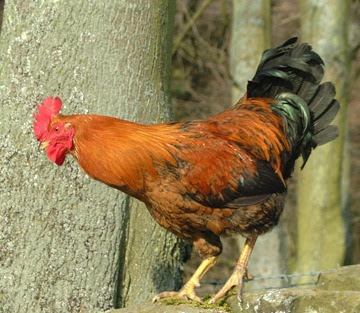The word for sweet in French is
bonbon – that is, ‘good’ twice over. Originally, honey was the basic ingredient of the sweets, or ‘spices’, that became popular during the reigns of the French kings. Before the fifteenth century, sugar was a rare and expensive commodity in France and was considered as medicine – rather than as something to help the medicine go down - and sold by the ounce. Catherine de Medici changed all that when she married Henri II in the sixteenth century.

Catherine made several important contributions to French society including the introduction of forks, broccoli, ballet, the outbreak of the French wars of Religion and – most importantly – sweets. With the discovery of America and the creation of sugar plantations, sugar had become more widely available and could be used in sweet-making. One of the most famous confectioners of the time was the Italian, Jean Pastilla, from which we get the word
pastille.
Sweets were reserved for royalty and the upper-classes. They were used to ‘pay’ judges for a favourable outcome to a lawsuit (‘Let me off, guv and I’ll slip you a pound of Liquorice Allsorts and a packet of wine gums’) and also to woo the ladies of the court. In the eighteenth century, it was fashionable for noblemen to carry
drageoirs – small boxes of sweets they offered around, rather like cigarettes.
In 1806, that old spoilsport, Napoleon Bonaparte, declared the Continental Blockade, banning all trading with Great Britain, including that of sugar. This forced other European countries to find an alternative to sugar cane and they did, in the form of sugar beet which thrived in northern soil. The newly plentiful supply of sugar led to the industrialisation of sweet making and soon sweets were available to everybody. Today, the French eat about four kilos of sweets per person, per year.

Many towns in France have a speciality. Lyon, for example, is famous for its
papillotes, traditionally eaten at Christmas and the New Year. These are chocolates or fruit jellies wrapped in colourful, fringed foil with a joke or a proverb inside the wrapper. Legend has it that in 1790, a certain Monsieur Papillot, a confectioner in Lyon, noticed that quantities of sweets were disappearing mysteriously from his shop. One day, he caught his shop assistant wrapping the sweets in love notes and sneaking them off to his girlfriend. Recognising a potential money-spinner when he saw one, he promptly sacked the love-struck assistant and began to make his own papillotes, slipping a humorous saying into each one.
Another sweet that began life as a mistake is the minty
Bêtise de Cambrai. The story goes that about two hundred years ago, a young apprentice-confectioner got his sweets all wrong and was told that he was an idiot and that he’d done something stupid yet again.
Bêtise means ‘a stupid thing’ but fortunately, these stupid things sold very well and now they are famous all over France.
Sugared almonds or
dragées are traditionally offered at christenings and weddings. Dragées have been made in Verdun since the middle-ages when somebody had the idea of coating almonds with sugar – probably an apothecary, as these medieval pharmacists had already invented the sugar-coated pill. Dragées had been around even before then, however, and some claim the sweet was named after a Roman confectioner, Julius Dragatus, who inadvertently dropped some almonds into a vat of honey and liked the result. Others maintain that the ancestor of the sugared almond was an ancient sweet from Montpellier, called a
diadragam. Whatever the origins, the dragées from Verdun are still considered to be the best.

Another type of dragée is the
Anis de Flavigny, or sugar-coated aniseed. Once again, the origins of this sweet are obscure but they are still made in the old Abbey in the village of Flavigny in Burgundy, as they have been for centuries. During the French Revolution, the monks had to flee the abbey and the villagers took over production of the sweets. Eventually, the business fell into the hands of a single family and it has been this way ever since. Today, Anis de Flavigny sweets come in various flavours and are still packed in the pretty little oval boxes that were designed in the 1930s to fit into vending machines.
Another sweet that comes in a distinctive tin is the
Cachou Lajaunie. These tiny, strong liquorice lozenges that freshen the breath and soothe the throat were developed by a chemist from Toulouse and today, the bright yellow round tin is sold in tobacconists’ shops everywhere.
The
berlingot de Nantes is a small, boiled fruit sweet which perhaps takes its name from the traditional headgear – the
bergot - worn by the local women in the nineteenth century when they sold their sweets in the streets of Nantes. This is disputed by the makers of the
berlingot de Carpentras, who claim to have invented the sweet in the sixteenth century. They could both be wrong because it appears the berlingot was already being made by the Arabs in the middle-ages – but as they seem to enjoy the rivalry, nobody bothers to press the point.

Vichy mints are made from extracts of Vichy mineral water, mixed with sugar and peppermint. It is said that eating eight mints a day is equivalent to a course of treatment in a spa – and it’s certainly cheaper.
These represent a mere handful of the scrumptious sweets to be found in France – I haven’t mentioned the
Bergamote de Nancy, Forestine de Bourges or the
Réglisse d’Uzès. Then there are the
Calisson d’Aix-en-Provence and the
Nougat de Montélimar…tell you what, I’ll write a post about those next time: doing the research is such
fun…













